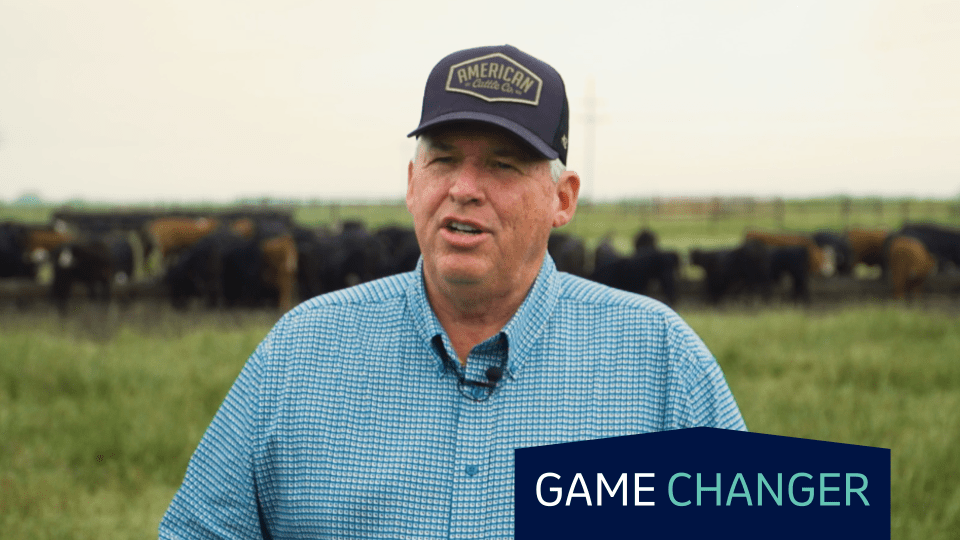Parasite control critical for high-risk stocker cattle at Oklahoma’s Shero Ranch
You couldn’t write a better recipe for high-risk cattle. Start with lightweight calves at 350 to 450 pounds. Combine sale barn lots from multiple ranches. Truck them as far as 100 miles.
A recipe for failure?
Not at Shero Ranch in Wilburton, Oklahoma. Earl Shero successfully meets the challenges of raising high-risk stocker cattle by following a comprehensive herd health program that gets incoming cattle off to a fast start and prepares them for future success.
“What we are trying to do, as a stocker operation, is to get cattle into the very best herd health program so when they go to the feedlot they are on a plane of nutrition and health and are very successful in the next phase of the industry,” Shero says. He aims for gains of 1.5 to 2 pounds per day before cattle leave the ranch at 750 to 800 pounds — typically a 140- to 160-day feeding period..

Protocols at Shero Ranch revolve around disease prevention.
“We’re trying to do a good job on the front-end when we receive these cattle, so they don’t get sick,” Shero says.
“We handle incoming cattle with the very best BQA protocols. We give them a vaccine program, worm them and get them cleaned up. We want them to have the best chance of getting started on feed quickly.”
Parasite management is an important factor in the Shero Ranch program, especially when dealing with lighter calves. Southeast Oklahoma is blessed with lush pastures and ample rain, leading to high populations of internal parasites that can keep cattle from reaching target gains.
Shero relies on SAFE-GUARD® (fenbendazole) Suspension to deworm incoming cattle.
“We use SAFE-GUARD for not only the economy, the cost, but through the years we’ve realized that it is actually the number one product out there to make sure that the animals are rid of all of the internal parasites that are coming in with them to our operation.”
Shero monitors parasite populations throughout the time cattle are on pasture, using fecal egg count reduction test (FECRT) kits.
“We’ll take fecal samples while the cattle are here. If we begin to see a rise in fecal egg counts, we will immediately put SAFE-GUARD in the feed. We can deworm those animals without having to bring them through the chute. We want to do it the easy and most cost-effective way,” he says.
“Keeping the parasites off the grass and out of our animals is very, very important,” Shero adds. “I think everybody in the cattle business needs to understand the lifecycles of parasites and how to intervene to keep parasites out of animals. We can actually see if we go too long without getting rid of the parasite load and it begins to affect our rate of gain.”
Shero says parasite management help they receive from Merck Animal Health has been a real game changer.
“Our Merck Animal Health reps have helped us not only through doing fecal egg counts, but when we have health issues with the animals, what we are seeing out there in the industry, guiding us, helping us moving through keeping these animals in the best condition that they possibly can,” he says.
Ask your Merck Animal Health representative for a free FECRT kit.
Meet other Game Changers who are working to better their operations, ensure their legacies and improve their industry.
Important Safety Information
Do not use in beef calves less than 2 months old, dairy calves and veal calves. A withdrawal period has not been established for this product in pre-ruminating calves. Additionally, the following meat withdrawal and milk discard times apply:
Safe-Guard Paste: Cattle must not be slaughtered for 8 days. For dairy cattle, the milk discard time is 96 hours.
Safe-Guard Suspension: Cattle must not be slaughtered for 8 days. For dairy cattle, the milk discard time is 48 hours.
Safe-Guard EnProAl Type C Medicated Block: Cattle must not be slaughtered for 11 days. For use in beef cattle only.
Safe-Guard 20% Protein Type C Medicated Block: Cattle must not be slaughtered for 16 days. For use in beef cattle only. Safe-Guard Type A and other medicated feed products (pellets, cubes, free-choice mineral, or free-choice liquid): Cattle must not be slaughtered for 13 days. For dairy cattle, the milk discard time is 60 hours.
Find more content for your beef operation.
